Please refer to the website below for more detailed operating
instructions and product information, including the USERʼS
GUIDE, Dedicated App (CASIO MUSIC SPACE) download, Song
Book, etc.
AP-550
https://support.casio.com/global/en/emi/manual/AP-550/
AP-S450
https://support.casio.com/global/en/emi/manual/AP-S450/
Basic Settings Such as Tuning
A0
B}0
B0
C1
C{1
D1
E}1
E1
F1
F{1
G1
A}1
A1
B}1
B1
C2
C{2
D2
E}2
E2
F2
F{2
G2
A}2
A2
B}2
B2
C3
C{3
D3
E}3
E3
F3
F{3
G3
A}3
A3
B}3
B3
C4
C{4
D4
E}4
E4
F4
F{4
G4
A}4
A4
B}4
B4
C5
C{5
D5
E}5
E5
F5
F{5
G5
A}5
A5
B}5
B5
C6
C{6
D6
E}6
E6
F6
F{6
G6
A}6
A6
B}6
B6
C7
C8
C{7
D7
E}7
E7
F7
F{7
G7
A}7
A7
B}7
B7
Quick Start Guide
After reading this document, keep it in a safe place along with the warranty certificate.
Be sure to read the “Safety Precautions” in the separate “READ THIS!” sheet, and use
the product correctly.
Included Accessories
0
Piano Stand with 3 Pedals
0
Music Stand
0
Headphones Hook (AP-550 only)
0
AC adaptor (AD-E24250LW)
0
Power cord
0
Wireless MIDI & audio adaptor
0
Leaflets
● READ THIS! Sheet
● Assembly Procedure for Piano Stand
with 3 Pedals Sheet
● Other (Warranty, etc.)
Items included as accessories are subject to change without notice.
Separately Available Accessories
You can get information about accessories that are separately available for this product from
your retailer or from the CASIO website.
EN
Preparation
General Guide
●
For detailed information on using the functions, refer to the USERʼS GUIDE on the CASIO website.
Wireless Functions (using the included Wireless MIDI & audio adaptor)
The operations described below are enabled while the Wireless MIDI & audio adaptor is plugged into the
USB Type A port. For more information, refer to the “USERʼS GUIDE”.
●
Sound playback of a Bluetooth
®
-connected smart device through the Digital Piano’s speakers
●
Use MIDI functions over a Bluetooth Low Energy connection
●
Use the dedicated app (CASIO MUSIC SPACE)
Touch Response
Pressing a key harder produces louder sound, while a softer key press produces softer sound.
Demo Play
Hold down the FUNCTION button and touch the SOUND MODE button to start demo song playback.
To stop playback, touch the
a
button.
Auto Power Off
If the Digital Piano is not used for approximately 4 hours, it will switch off automatically. When set to Off,
the power will not automatically switch off.
To turn On or Off, hold down FUNCTION button and press the B
}
0 key. Each press of the B
}
0 key toggles
between On and Off. When you disable a setting, a low tone sounds.
Panel Lights Off Setting
The number of seconds before the touch button on the left-side panel turns off can be changed, or it can
be set not to turn off. When set to off, the left-side panel will not switch off.
While holding down FUNCTION button, press the G7 key. Each press of the G7 key toggles the setting
(off / 5s / 15s / 30s / 60s / 120s). When the setting is toggled to off, a low tone will sound.
Performance Recording/Playback
After touching the
0
(REC) button, recording starts as soon as a key is pressed on the keyboard. To end
the recording, touch the
0
(REC) button again. To play back the recorded content, touch the
a
button.
About the Dedicated App (CASIO MUSIC SPACE)
Enjoy a range of fun functions using the Digital Piano together with the CASIO MUSIC SPACE app.
Please visit the “Downloads” section of our website.
Setting the brightness of the Visual Information Bar
While holding down FUNCTION button, press the C6 key. Each press of the C6 key toggles between off, 1 (dark), and
2 (bright).
Changing the display settings of the Visual Information Bar
While holding down FUNCTION button, press any one of the F5 to A5 keys. The lighting pattern changes depending on
the display setting selected.
Auto: The object displayed automatically changes according to the performance or operation of the instrument.
Metronome: Lights up with the beat or tempo of the metronome. (Switchable lighting patterns)
Keyboard: Lights up according to the strength with which the keys are pressed or with the song being played.
Pedal: Lights up according to the depth to which the damper pedal is depressed.
Audio: Lights up according to the song played on the wirelessly connected external device. (Switchable lighting patterns)
Reference
Product Specifications
Model: AP-550BK/BN/WE
Keyboard: 88-key
Acoustics: Amp output: 16W + 16W (Maximum effective output power 20W + 20W)
Speakers: 12cm × 2 + 3.5cm × 2
Power Supply: AC adaptor (AD-E24250LW)
Power consumption: 24V
=
20W
Dimensions: Piano and Stand: 140.1(W) × 44.0(D) × 89.1(H) cm (55 3/16 × 17 5/16 × 35 1/16 inch)
Weight: Piano, Stand and Music Stand: Approximately 49.5 kg (109.1 lbs)
Model: AP-S450BK/BN/WE
Keyboard: 88-key
Acoustics: Amp output: 16W + 16W (Maximum effective output power 20W + 20W)
Speakers: 12cm × 2 + 3.5cm × 2
Power Supply: AC adaptor (AD-E24250LW)
Power consumption: 24V
=
20W
Dimensions: Piano and Stand: 139.3(W) × 29.9(D) × 86.6(H) cm (54 13/16 × 11 3/4 × 34 1/8 inch)
Weight: Piano, Stand and Music Stand: Approximately 37.6 kg (82.9 lbs)
x
Specifications and designs are subject to change without notice.
0
Any reproduction of the contents of this manual, either in part or its entirety, is prohibited. Except for
your own, personal use, any other use of the contents of this manual without the consent of CASIO is
prohibited under copyright laws.
0
IN NO EVENT SHALL CASIO BE LIABLE FOR ANY DAMAGES WHATSOEVER (INCLUDING,
WITHOUT LIMITATION, DAMAGES FOR LOSS OF PROFITS, BUSINESS INTERRUPTION, LOSS
OF INFORMATION) ARISING OUT OF THE USE OF OR INABILITY TO USE THIS MANUAL OR
PRODUCT, EVEN IF CASIO HAS BEEN ADVISED OF THE POSSIBILITY OF SUCH DAMAGES.
0
The
contents
of this manual are subject to change without notice.
0
Company and product names used in this manual may be registered trademarks of others.
Functions Not Covered in This Manual
These instructions provide general information about main functions. For more detailed information, refer
to the “USERʼS GUIDE”.
The “USERʼS GUIDE” includes information on the topics listed below.
●
Adjustable Touch Response
●
Hall Simulator/Reverb and Surround effects
●
Built-in tune playback and practice
●
Smart device linking for enhanced function
●
Repeating playback of a performance (Instant Replayer)
●
Other
About Music Score data
You can download music score data as a PDF file from the CASIO website. You will then be able to view
music scores on your smart device. You can jump from the PDF file table of contents directly to the music
score you want, and you can print out scores as needed.
If you select a function marked with an asterisk (
*
), pressing the C1 key executes that function.
Example: To restore the factory default settings (factory reset)
Hold down the FUNCTION button and press the A0 key and then the C1 key.
Preparing the Music Stand
Additional Functions
Declaration of Conformity
Model Number: AP-550/AP-S450
Trade Name: CASIO COMPUTER CO., LTD.
Responsible party: CASIO AMERICA, INC.
Address: 570 MT. PLEASANT AVENUE, DOVER, NEW JERSEY 07801
Telephone number: 973-361-5400
This device complies with Part 15 of the FCC Rules, Operation is subject to the following two conditions:
(1) This device may not cause harmful interference, and (2) this device must accept any interference
received, including interference that may cause undesired operation.
Select a key while holding down the FUNCTION button.
●
If you press a key while changing a setting, the number of times the notification tone sounds varies according to the value set and the sequence.
●
When you disable a setting, a low tone sounds.
Wireless MIDI & audio adaptor
Duet Tuning Visual Information BarMixer RePlayer/Recorder MIDI settings
USB Flash Drive
(off/5s/15s/30s/60s/120s)
(off/Weak/Normal/Strong)
Ensure this Digital Piano is turned off before plugging in or unplugging any devices.
After 15 seconds of no operation, the left panel turn off. When the panel is touched, the buttons light up. You can change the number of seconds until the button lights switch off (or have them not turn off at all). For details,
see “Panel Lights Off Settingˮ in the “Additional Functionsˮ section on the right.
Computer, smartphone, etc. (commercially available)
Connects to the included
pedal unit
*
Underside of instrument Illustration shows the AP-550. The various input/output jacks
are located as shown in the illustration of the underside of the instrument below.
USB flash drive
(commercially available)
Wireless MIDI & audio adaptor
AC adaptor
Headphones
(commercially available)
Household power outlet
Music stand
Connect in order
,
2
,
.
*
*
Please refer to the separate leaflets for how to assemble the included stand and connect the pedal unit and AC adaptor to the instrument.
AP-S450
AP-550 Music stand
Power cord
Illustration shows the AP-550.
a
button
See in this document
Starts/stops playback for songs or
recorded content.
GRAND PIANO button
See in this document
Selects the GRAND PIANO 1 CONCERT
tone.
SOUND MODE button
See in this document
Switches the Hall Simulator/Reverb and
Surround effects On/Off.
METRONOME button
See in this document
Start/stop the metronome.
DEMO Indicator
When you press and hold FUNCTION button, the button
blinks. Touch SOUND MODE button while it is blinking to
play the demo song.
Beat Indicator
When playing a song, etc., the left side lights up on
the first beat of the bar and the right side lights up on
the remaining beats.
Track Indicator
During record/playback, “Lˮ lights up when the left-hand
part is specified and “Rˮ lights up when the right-hand
part is specified.
Hall Simulator/Reverb Indicator
Lights up when the Hall Simulator/
Reverb is on.
Surround Indicator
Lights up when Surround is on.
0
(REC) button
Touch to record a performance.
FUNCTION button
See in this document
Can be used in conjunction with keyboard
keys to change various settings.
Visual Information Bar
Various information is displayed using LED lighting patterns in the center of the front panel.
Volume knob
Rotate to adjust overall volume.
P
(Power) button
Press to turn on power. Long-press
to turn off power.
Notification Tone Volume (
+
)
Auto Resume
(
disable/enable
)
Power On Alert
(
disable/enable
)
Speaker Out
(
disable/enable/Auto
)
Touch Button Luminosity
(
1/2
)
Hi-Res Velocity MIDI OUT
(
disable/enable
)
Keyboard Channel (–)
Metronome Type (
1/2/3/4/5
)
Display (Pedal)
Display (Metronome)
A-tuning
(
442.0Hz
)
Scale Tuning base note
Audio Rec with MIDI playback
Instant RePlayer
Keyboard Volume (
+
)
MIDI Song Volume (
+
)
Audio Song Volume (
+
)
Wireless Audio Center Cancel
(
disable/enable
)
Right-side Keyboard Octave Shift (–)
Left-side Keyboard Octave Shift (–)
*
Save MRF
*
Load SMF/MRF
Connection Notification Tone Volume (–)
Wireless Audio Pairing
Auto Power Off
(
disable/enable
)
Panel Lock
(
disable/enable/Auto
)
Notification Tone Set selection (
1/2/3
)
Notification Tone Volume (–)
Panel Light setting
Volume Sync Equalizer
Headphones mode
(
off/on
)
Left Panel Touch Button Sensitivity (
+
)
Left Panel Touch Button Sensitivity (–)
Keyboard Channel (
+
)
Local Control
(
off/on
)
/
Brightness/Off
(
off/1/2
)
Audio Illumination Type (
1/2/3/4
)
Display (Audio)
Display (Keyboard)
Display (Auto)
A-tuning (+0.1Hz)
A-tuning (–0.1Hz)
A-tuning
(
440.0Hz
)
Stretch tuning
(
off/on
)
Scale Tuning Selection
Audio Recorder
MIDI Recorder
Keyboard Volume (–)
MIDI Song Volume (–)
Audio Song Center Cancel
(
off/on
)
Audio Song Volume (–)
Wireless Audio Volume (
+
)
Wireless Audio Volume (–)
Right-side Keyboard Octave Shift (
+
)
Left-side Keyboard Octave Shift (
+
)
Duet Mode
(
off/on/pan
)
*
Format
*
Delete SMF/MRF/Audio
*
Save SMF
*
Delete Connection History
Connection Notification Tone Volume (
+
)
Wireless Function off/on
Execution
*
Factory Reset

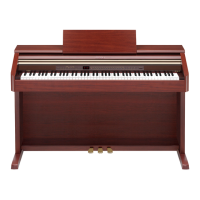
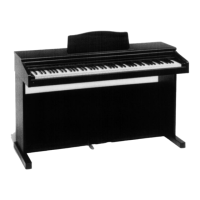
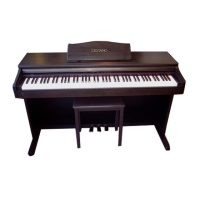
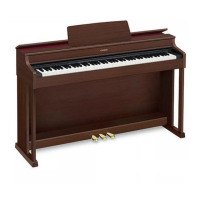
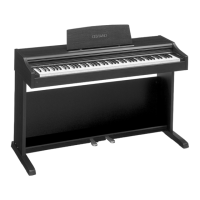

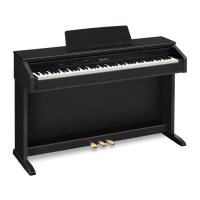
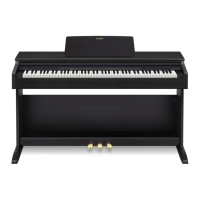

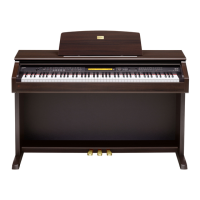
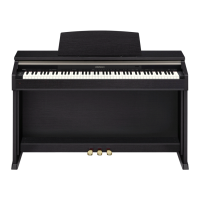
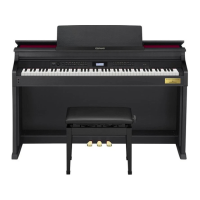
